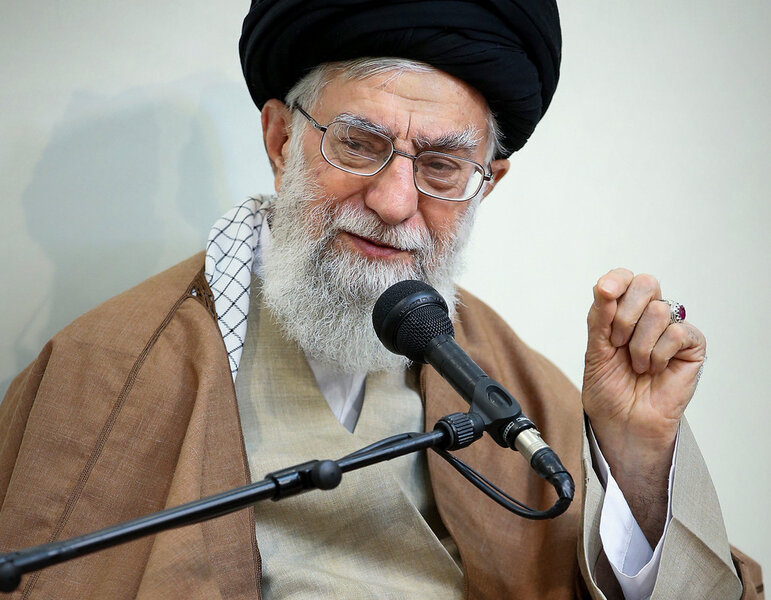Reading liberty in Tehran
Loading...
What drives many Middle East conflicts? Clashes over religion, of course, such as whether elite clerics should rule. Several countries, such as Saudi Arabia, Israel, and Tunisia, have lately tried to curb the power of religious authorities. Last year’s overthrow of Islamic State’s brief caliphate marked a major shift in thinking. Now the region’s mightiest theocracy, Iran, has seen a historic challenge after more than a week of mass protests against the Islamic Republic.
The protests began Dec. 28 in Mashhad, a Shiite pilgrimage city, and spread quickly to nearly 80 cities and towns. Unlike protests in 1999 and 2009, the largely leaderless crowds consisted mainly of jobless youths and hard-pressed workers. They expressed resentment at everything from a rise in the price of eggs to shrinking welfare subsidies to corruption.
Part of the fury was directed at a new budget that favors higher spending on the wealthy religious institutions of ruling clerics and on Iran’s military activities in nearby countries aimed at spreading Islamic “revolution.” The budget priorities only reinforce a popular belief that reigning clerics are enriching themselves and suppressing dissent.
Yet it is the protesters’ favorite slogans that hint at a possible historic transition in Iran. Thousands chanted, “We don’t want an Islamic Republic,” “Clerics! Get lost,” and “The people live in poverty, and the leader acts like a god.”
The latter is a reference to Ayatollah Ali Khamenei, the second supreme leader since the founding of the Islamic Republic in 1979. Like his predecessor, the late Ruhollah Khomeini, he claims power over the state based on a claim to being the most eminent living Islamic jurist, while allowing a semblance of democracy with rigged elections. Such religious doctrine is not a recipe for humility in governance or accountability to the people – which lies at the heart of the protesters’ demands.
Many revered Shiite clerics, such as Grand Ayatollah Ali al-Sistani in Iraq, argue against the Iranian model of clerics ruling over secular government, especially in a diverse society. Within Iran, leading voices often ask the regime to listen more to the people. Just two months before the protests, President Hassan Rouhani, a relative moderate who wields little power, warned about popular distrust of the leading imam. “If the asset of trust gets destroyed, everything would be destroyed,” he said.
Nearly four decades of theocratic autocracy will be hard to shake in Iran. Yet 48 million of Iran’s 80 million people now have smartphones, giving them greater access to ideas. Not only can they quickly mobilize, more of them seek a government based on each person’s equality and an ability to reason together through peaceful persuasion rather than through the imposition of religion with state coercion.
In countries that cherish both social stability and freedom of conscience, inspiration comes not from one person but from the highest qualities of thought expressed through collaboration and the democratic process. Those who listen well and seek the highest truth can rule the best. Iran may now be on such a path. And as more Middle East countries haltingly embrace these concepts, the more the region will be at peace.





